Spinach Farming in India
The following article talks about spinach farming.
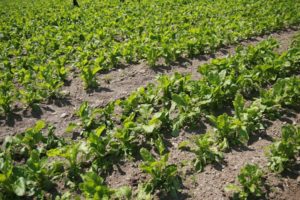
Introduction:
Spinach is a hot season leafy vegetable grown across all India, this can be grown in back yards as well as open fields commercially. Known for lush green foliage spinach is rich in iron, vitamins, and anti-oxidants. Spinach crop can be harvested after 6-8 weeks from planting. In a warm climate, spinach tends to produce seeds rather than growing the foliage. So harvest it at the right time. It is called as ‘Palak’ in Hindi. Spinach can be grown in containers at home, follow below tips for success.
Some facts about Growing Spinach:
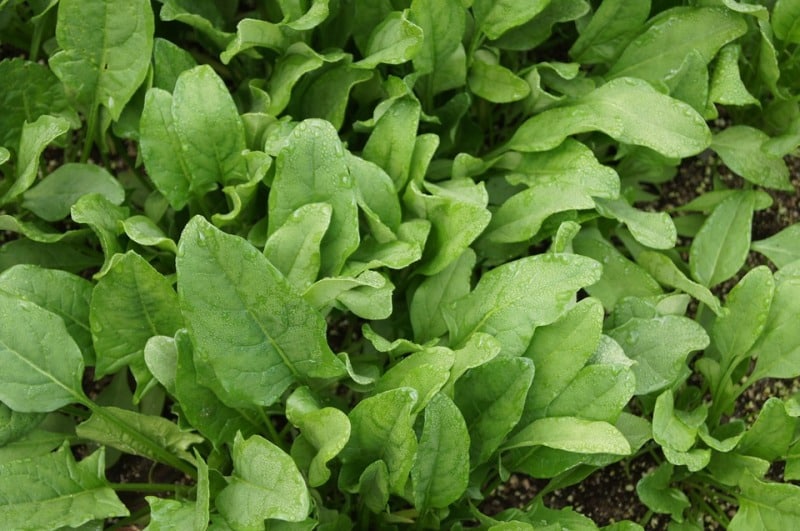
- Spinach can be grown from full sun to partial shade either in the home garden or outdoor gardens. Spinach is best to grow in pots/containers in balconies, backyards even on the terrace.
- Spinach is a cool season crop and produces harvest all year round. It can be grown indoors as well.
- Spinach requires good fertilizers and nutrients as it is a heavy feeder. 4-1-2 ratios of nitrogen, phosphorus, and potassium (n-p-k) are good enough to grow healthy spinach leaves.
- Usually, spinach is germinated from seeds and even can be grown from cuttings. You can maintain 3 inches space between plants and 2 feet row to row distance.
- Spinach can grow back and gives multiple harvests with proper growing practices.
- If spinach is grown in pots, the ideal size of the pot is 10 to 12 inches.
- Spinach is grown as an annual crop and it tolerates some shade and requires 1 to 1.5 inches of water per week. In the case of dry and hot climates, it requires more watering.
- The bolting of spinach is due to moisture stress (providing less water) in the final stages of the plant.
- Spinach can be regrown from cuttings plus spinach can be grown easily from the seed germination.
- There are 3 basic types of spinach can be grown throughout the world:
-
-
- Savoy has dark green
- crinkly
- curly leaves
-
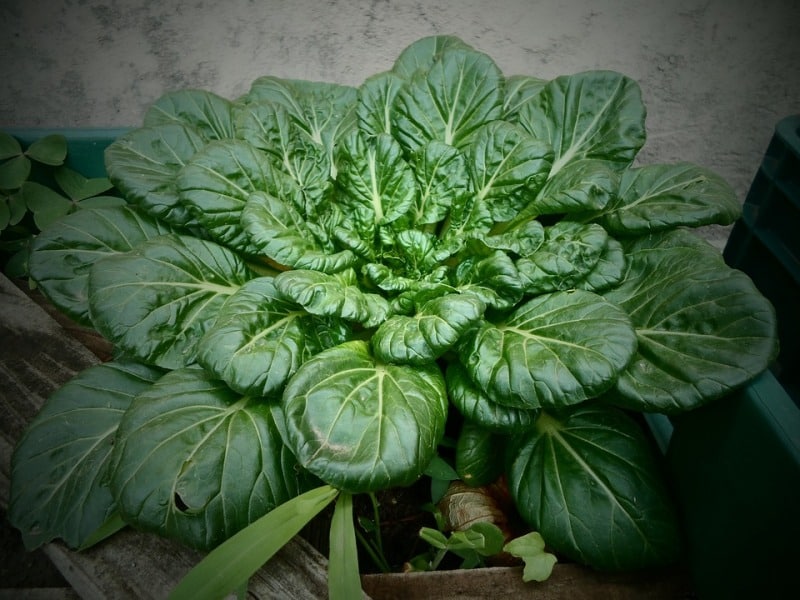
Other Local Names of Spinach:
Palak( Marathi & Hindi) ,Visalacheera (Malayalam),Pasali (Tamil), and Palakura (Telugu).
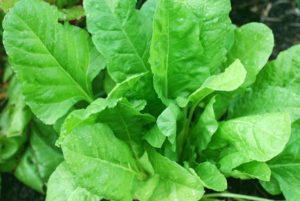
Improved varieties of Spinach in India:
a). Pusa Jyoti: It produces large, green, thick, tender, succulent and crisp leaves of good taste. Plants are vigorous quick growing and regenerate quickly after each cutting. It gives 6 to 8 cuttings and yield over 200 to 400 quintals per hectare. It performs well in this region.
b). Pusa All green: It produces uniformly green tender leaves and gives about 6 cuttings depending upon the time of sowing and management. It is heavy yielder giving leaf yield of 125 quintals per ha.
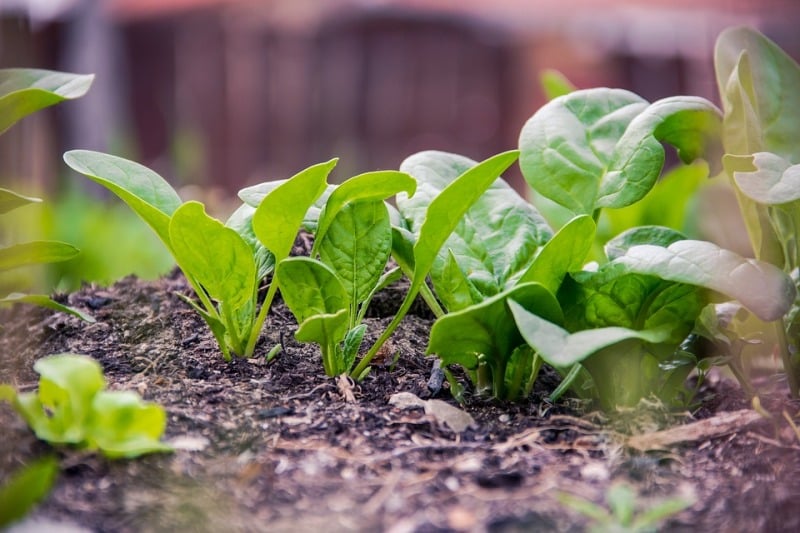
Other varieties in Spinach:
There are other varieties viz. Pusa harit, and jobner Green.
Climatic requirement for Spinach Plantation:
Spinach is a hot weather crop but can also be gown during the moderate winter season. It can also tolerate frost to some extent. Spinach does well during the winter season. It is extremely susceptible to water logging and bad drainage. It can be grown successfully in plains and on hills.
Read: Aloe Vera Juice Extraction Process.
The soil requirement for Spinach Plantation:
Spinach grows in any type of well-drained soil. However loamy soil is ideal. Soil should be loose too so that spinach seedlings could establish roots easily and quickly. Add a fine layer of garden compost or field yard manure (FYM) to the soil. It will provide nutrients to the plants.
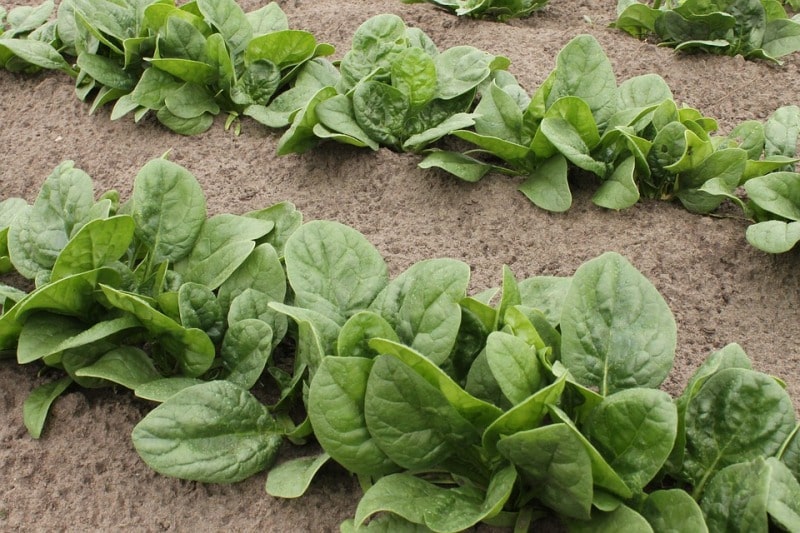
Propagation and Sowing of Spinach:
Spinach is propagated from seeds. Prepare soil enriched with garden compost or FYM and sow seeds a ½ inch deep and 1 inch apart. Water the soil without affecting seeds. Seeds germinate in a week. It is sown from October as the main crop and in January- February as a summer crop in this region. It requires 30 -40 kg seed per hectare. Seeds are soaked in water before sowing. Seeds are generally broadcast in flatbeds. However, line-sowing at 20 cm distance is convenient for intercultural operation as this increases air circulation around the crop and minimizes the chances of any fungal attack.
Manures and Fertilizers for Spinach:
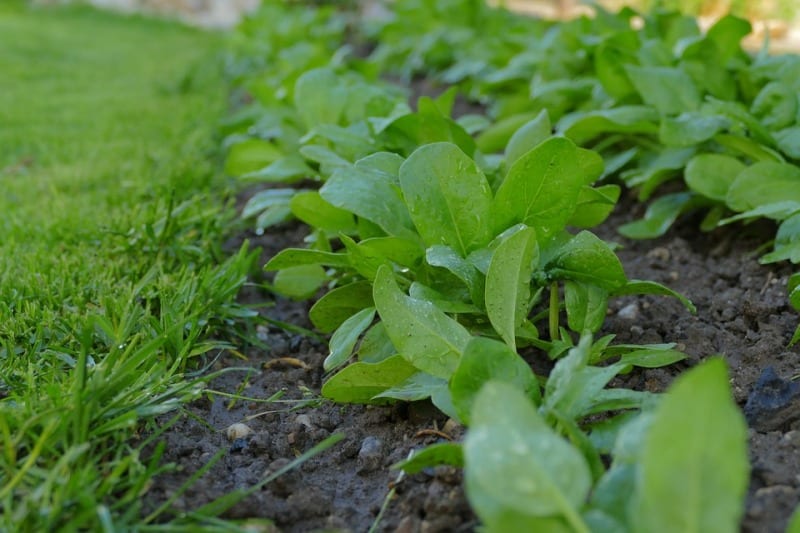
Spinach doesn’t have feeding requirements. Good quality compost works well as fertilizer. 30 to 50 cartloads field yard manure (FYM) should be at the time of soil preparation. 50 kg n/ha should be applied, a ½ dose of N should be given at the time of sowing, remaining ½ dose is again divided into two equal doses which are given at the time of first and second harvesting.
Weed control in Spinach Crop:
One or two weedings should be given to keep the spinach crop clean, and healthy.
Read: Plant Disease Management.
Water requirement for Spinach plants:
Spinach is a humidity-loving plant. Mulch the soil using dried leaves, straws, etc to retain moisture around the plant. Winter spinach crop needs irrigation 10 -15 days interval depending on soil type. January- planted spinach crop needs irrigation at 6 to 7 days interval in summer months. Keep soil moist.
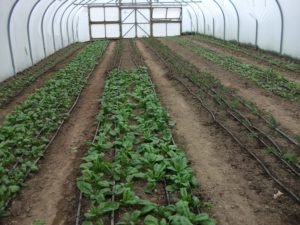
Harvesting and the Yield of Spinach:
Start harvesting crop after 6-8 weeks of planting. Cut off outer leaves which are 3-4 inches long. It will encourage more growth on the plant and ultimately results in more foliage to harvest. Only well grown succulent and tender leaves be trimmed. Winter crop gives more cuttings. On an average palak crop give 4 -6 cuttings. The total yield of green leaves is 80- 100 quintals per hectare. After harvesting, leaves are tied in bundles and sent for marketing. Remember to harvest the crop completely before plant blots and produces seeds. (Generally, when the temperature rises the plant tends to flower and fruit due to increased temperature and stops producing more leaves).
The bottom line of growing Spinach:
Commercial spinach farming is good profitable farming.
Read: Container Tomato Gardening Ideas.